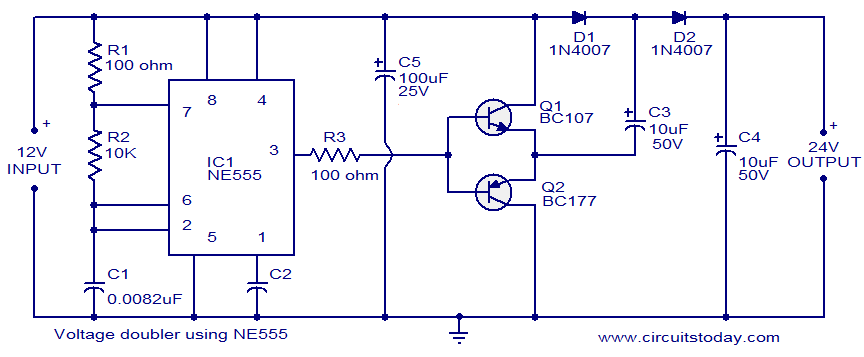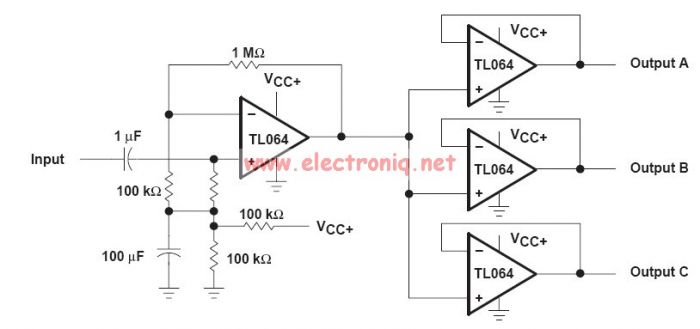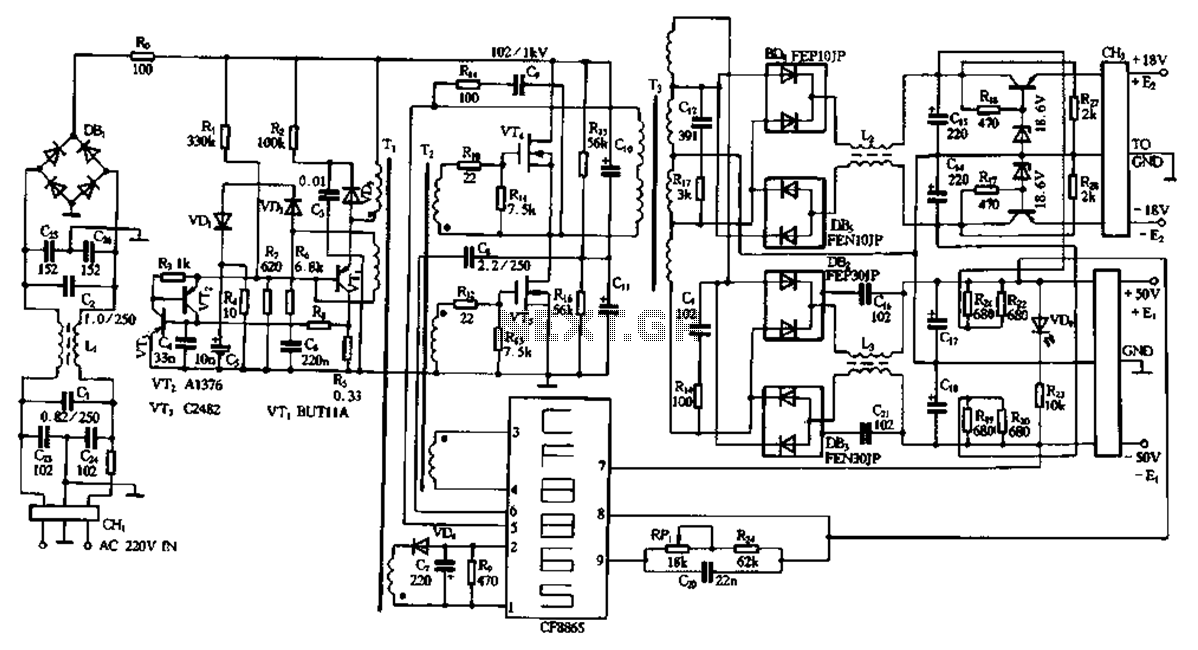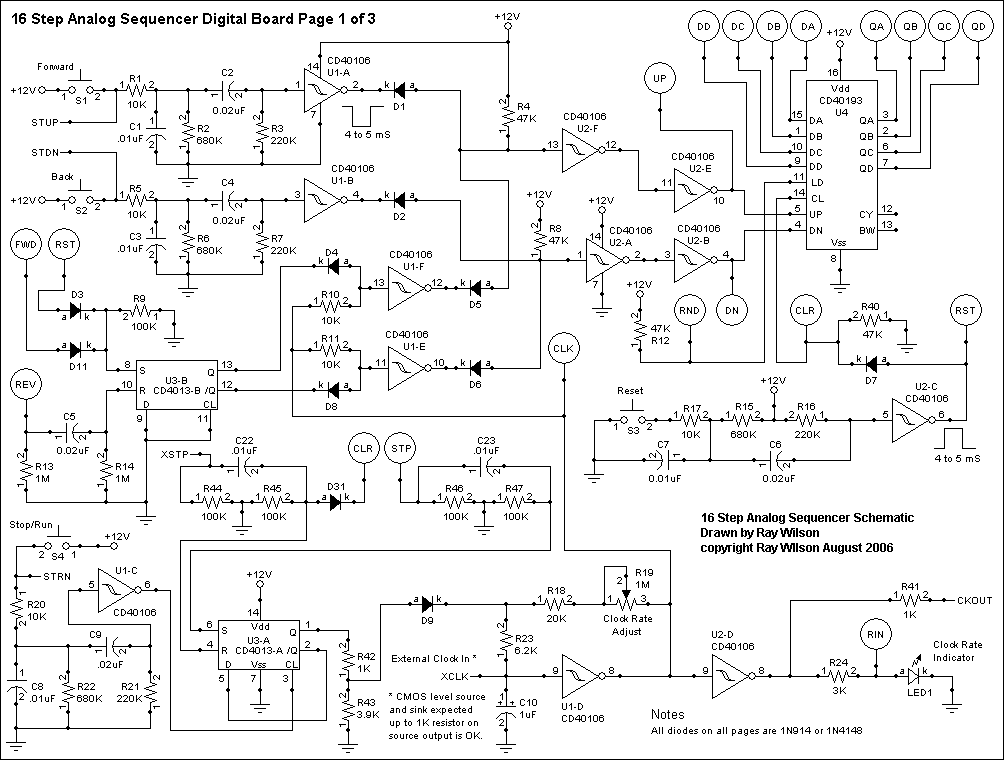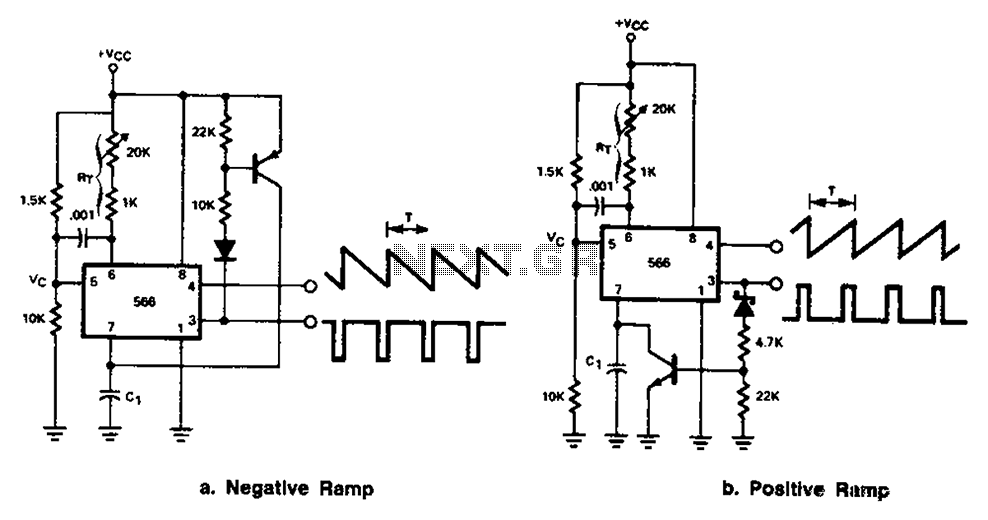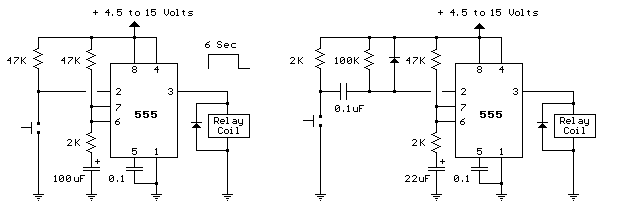
Sequence timer diagram composed by NE555
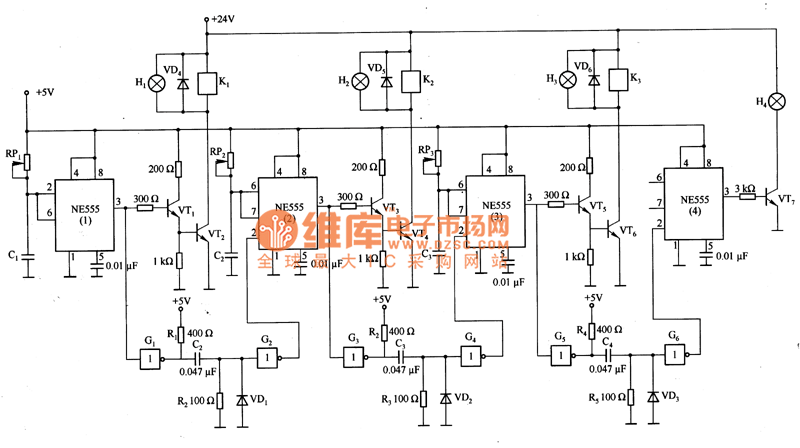
This is a sequence timer diagram composed of an NE555 timer. The timer can be set to any duration when the power is connected, allowing it to control an external system. In the circuit, K1-K3 are relays used to activate the corresponding systems. By adjusting the resistance of RP1-RP3, the relay's break time can be modified. Pins 2 and 6 of the NE555 are connected together. When the power is supplied, if the NE555 operates, capacitor C1 charges instantaneously, and the charging current flows through pin 2 to C1. Simultaneously, a waveform output from pin 3 of the NE555 generates a trigger pulse after being processed by G1, which is then applied to pin 2 of the NE555, initiating its operation.
The NE555 timer is a versatile device commonly used for timing applications. In this particular configuration, it operates in a monostable mode, meaning it produces a single output pulse in response to a trigger signal. The relays K1, K2, and K3 serve as switches that can control larger loads, activating or deactivating external devices based on the timer's output.
The resistors RP1, RP2, and RP3, along with the capacitor C1, determine the timing interval of the circuit. The time period during which the output remains high can be calculated using the formula T = 1.1 * R * C, where T is the time in seconds, R is the resistance in ohms, and C is the capacitance in farads. By varying the values of RP1, RP2, and RP3, the user can customize the timing intervals to suit specific application requirements.
The connection of pins 2 and 6 ensures that the timer is retriggered as long as the voltage at pin 2 remains below 1/3 of the supply voltage. When the capacitor C1 charges, it eventually reaches a threshold voltage, causing the output at pin 3 to go high. The processed waveform output is essential for generating a clean trigger pulse, which is necessary for the reliable operation of the NE555 timer.
Overall, this circuit is suitable for applications such as timed control of motors, lights, or other devices requiring precise timing sequences. The simplicity of the NE555 timer, combined with the relay outputs, makes it an effective solution for various automation tasks.This is the sequence timer diagram composed by NE555. The timer can set time any time when the power is connected, break and control the external system to work. In the circuit, K1-K3 are relays used to control the corresponding system to work, adjust the resistance of the RP1-RP3, which can change the break time of the relay.
The pin 2 and 6 of NE555(1) connected together, when the power is connected, if the NE555(1) works, C1 charges instantaneously and the charging current flows through pin 2 to C1. At the same time, a waveform output from the pin 3 of NE555(1) forms a trigger pulse after color processed by the G1, which is added to the pin 2 of NE555(1) and make it work.
🔗 External reference
The NE555 timer is a versatile device commonly used for timing applications. In this particular configuration, it operates in a monostable mode, meaning it produces a single output pulse in response to a trigger signal. The relays K1, K2, and K3 serve as switches that can control larger loads, activating or deactivating external devices based on the timer's output.
The resistors RP1, RP2, and RP3, along with the capacitor C1, determine the timing interval of the circuit. The time period during which the output remains high can be calculated using the formula T = 1.1 * R * C, where T is the time in seconds, R is the resistance in ohms, and C is the capacitance in farads. By varying the values of RP1, RP2, and RP3, the user can customize the timing intervals to suit specific application requirements.
The connection of pins 2 and 6 ensures that the timer is retriggered as long as the voltage at pin 2 remains below 1/3 of the supply voltage. When the capacitor C1 charges, it eventually reaches a threshold voltage, causing the output at pin 3 to go high. The processed waveform output is essential for generating a clean trigger pulse, which is necessary for the reliable operation of the NE555 timer.
Overall, this circuit is suitable for applications such as timed control of motors, lights, or other devices requiring precise timing sequences. The simplicity of the NE555 timer, combined with the relay outputs, makes it an effective solution for various automation tasks.This is the sequence timer diagram composed by NE555. The timer can set time any time when the power is connected, break and control the external system to work. In the circuit, K1-K3 are relays used to control the corresponding system to work, adjust the resistance of the RP1-RP3, which can change the break time of the relay.
The pin 2 and 6 of NE555(1) connected together, when the power is connected, if the NE555(1) works, C1 charges instantaneously and the charging current flows through pin 2 to C1. At the same time, a waveform output from the pin 3 of NE555(1) forms a trigger pulse after color processed by the G1, which is added to the pin 2 of NE555(1) and make it work.
🔗 External reference
